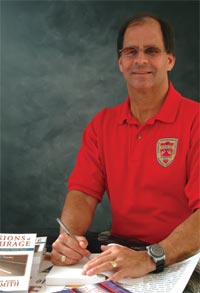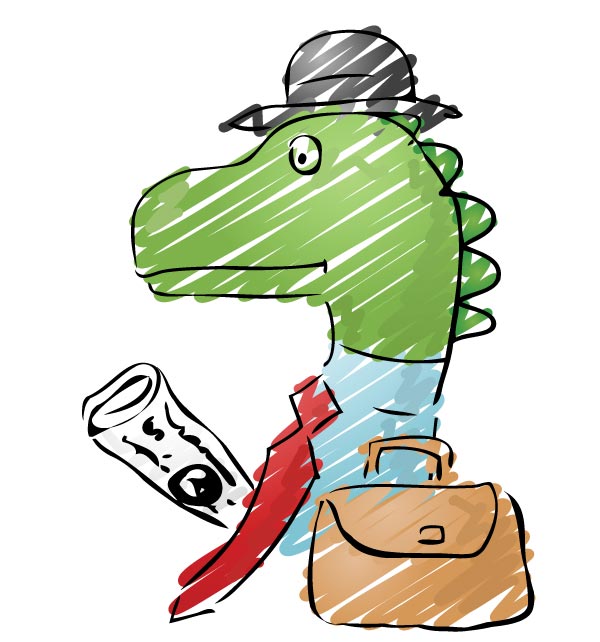In his 1998 best-selling book The Greatest Generation, journalist Tom Brokaw argues that men and women born between 1910 and 1925 were America’s greatest generation. As youngsters, they grew up having to endure the great depression, an economic time far worse than the recession we have just experienced.
Before these Americans had regained a reasonable level of employment and confidence in their society, World War II was thrust upon them. This global conflict was far worse than our low intensity actions in Iraq and Afghanistan. Brokaw believed these men and women fought not for fame or recognition, but because it was the right thing to do. Their perseverance created the vibrant democracy and superpower that America is today.
This generation is now passing into the history books. Whether we learn from them about positive values such as respect for the rule of law, self-reliance tempered by good teamwork, and service to community and country is now up to us. The world has, of course, changed during the ensuing generations. Our most bitter enemies in World War II have now become some of our staunchest allies. While the geopolitical situation evolves over time, the noble sacrifices of this generation remain. They should be a beacon for us all. In 1961, one of those people said in his presidential inauguration speech, “Ask not what your country can do for you, but what you can do for your country.” That’s what America is really all about.
One of the most famous “touchstone” groups from that generation was 80 U.S. Army Air Forces personnel involved in the legendary mission called the “Doolittle Raid.” This event occurred only 130 days after the calamitous attack on Pearl Harbor and our entry into World War II. The newspaper headlines catalyzed all Americans in one of their most desperate hours. The morale of the entire nation was lifted. An unconscious bond was forged among all citizens to support the war effort, in whatever capacity they could serve.
This group is now dwindling to a precise “handful” – only five members remain. This month, on April 18, they will commemorate the 69th anniversary of their flight into mythology with their annual reunion in Omaha, Nebraska. In February 1942, when they were first approached about volunteering for a “highly dangerous missions from which half would not return” these young men were in their early twenties. Many were married, some with kids. Few had planned to make a career in the military. The majority were “citizen soldiers.” But they all stepped forward, knowing their country needed them to “man up” at this moment and consider the greater good. The operational part of this mission began in San Francisco bay, so here is an insight into their story.
The Daring Tokyo Raid of 1942
On Thursday, April 2, 1942, San Franciscans awoke to a normal spring morning, with the night’s fog slowly dissipating over the bay. By 10 a.m., sunshine was breaking through in patches. As the visibility increased to 1,000 yards, strollers along the Embarcadero, dog walkers in the Marina, and drivers crossing the Golden Gate Bridge were treated to an unusual sight.
Eight U.S. Navy warships had weighed anchor that morning and were slowly working their way past Alcatraz Island, heading toward the Golden Gate. In the lead were four destroyers, followed by an aircraft carrier, which itself was trailed by two cruisers and a fleet oiler. The Pacific war effort was just getting ramped up so there was a general increase in military traffic of all sorts throughout the Bay Area. Most citizens would have watched this parade of ships with a mixture of general curiosity about where they were headed and apprehension for the safety of the crews. Those with a more discerning maritime eye would have been drawn to the strange sight of sixteen olive-drab U.S. Army Air Forces bombers scattered across the flight deck of the aircraft carrier. By 11:30 a.m., the ships had faded into the mist beyond the Golden Gate, on their way into the American lore.
One particular naval officer, Captain Donald Duncan, silently watched the procession from the Embarcadero. As he turned to enter a staff car for the ride to San Francisco airport, he smiled ruefully to himself and thought “well, if all goes as planned, we’ll have some great news for President Franklin Roosevelt in a few weeks.”
The war in the Pacific was not going well. Immediately following the enormous destruction wrought by the surprise attack on Pearl Harbor on December 7, 1941, the United States and its allies suffered additional setbacks. Both Guam and Wake Island had been seized and the Philippines had been invaded. The American public was both stunned and outraged at these defeats. They were frustrated at the apparent inability of the supposedly powerful U.S. military to stop a small island nation’s assault on our outposts in the Pacific. A common theme in newspaper editorials was “where is the Navy?”
Prior to the Pearl Harbor attack, President Roosevelt had secretly agreed with our European allies that the “arsenal of democracy” would commit the bulk of its initial military and industrial effort in fighting the Nazis to liberate Europe. FDR now faced a dilemma – without committing major resources in the Pacific, he had to respond to the Japanese attack, both to improve the morale of the American public and let the enemy know they would be sharply dealt with in due time. For many weeks after Pearl Harbor, FDR pressed his military leaders about organizing a bombing strike against Japan itself.
The Navy couldn’t do this alone – its small single engine bombers did not have the range to carry out a raid without the probable loss of the fleet that launched it. While the Army had bigger bombers with a longer range, they had no bases in the orient from which to launch them.
Finally, in early January of 1942, Navy Captain Francis Low had an inspiration – why not launch Army bombers from an aircraft carrier? He discussed this with his boss, Chief of Naval Operations Admiral Ernest King. King asked his senior adviser for aviation operations, Captain Donald Duncan, to look into it further. He did several days of research, even asking Lieutenant Stephen Jurika, who had recently returned from duty with the American Embassy in Japan, to help identify high value targets.
After a finishing a 30-page feasibility study, Duncan presented his plan to the head of the Army Air Forces, General “Hap” Arnold. After approving the general concept, he selected Lieutenant Colonel James Doolittle to head up “Special Aviation Project #1.”
Doolittle, who was born in Alameda, was a well known pioneer aviator of his era, often mentioned in the same context as Charles Lindbergh. Doolittle energetically threw himself into the project since the weather in mid-April provided the optimum timeframe. With full backing of “Hap” Arnold, Doolittle worked many miracles.
He agreed with Duncan’s assessment that the best medium range bomber for the job was the twin-engine B-25 Mitchell. The 17th Bombardment group selected twenty-four of these aircraft to be modified for this unique mission. Doolittle also handpicked the aircrews from this same outfit since they were familiar with the new bomber. All the men were volunteers and only knew that it was a very dangerous mission; they did not know what it entailed.
For the floating airbase, the Navy offered up its brand new aircraft carrier, the USS Hornet (CV-8), just finishing sea trials off the east coast and soon to relocate to the Pacific. Captain Marc Mitscher and his crew successfully test launched two B-25s from the Hornet off the coast of Virginia on February 2, proving the concept was valid.
The two project officers, Duncan and Doolittle, now set their respective operational wheels in motion. The bombers were modified with extra gas tanks to fly further than normal while the USAAF pilots and aircrew were trained in carrier-deck launches. They practiced these unusual take-off techniques at Eglin airfield in Florida, under the tutelage of Navy flight instructor Lieutenant Henry Miller. Most of the crews learned quickly and only two aircraft were damaged beyond field repair.
Meanwhile, the Hornet steamed through the Panama Canal into the Pacific Ocean. It stopped in San Diego to embark its own air group, since it would be assigned combat duty shortly after finishing the Tokyo raid mission. After the Hornet had arrived in San Diego, the Army aircraft and crews flew across the country to McClellan airfield. Final engine and other maintenance checks were performed at the Sacramento Air Depot. At the same time, Hornet was ordered to travel up the coast, entering San Francisco Bay on March 31 and tying up at one of the piers on Alameda Naval Air Station.
Just before flying to Alameda, several of the Army crews managed to get in some practice take-offs at the small airfield at Willows, in the central valley. It was the final chance to make sure their short-field technique was good – the next time would be the real deal.
Finally, all the puzzle pieces came together. On March 31 and April 1, the remaining twenty-two B-25s arrived at Alameda Naval Air Station. The 16 aircraft that were in the best operating condition were craned aboard the Hornet and tied down to the flight deck. That evening, the Hornet relocated to berthing area #9 in San Francisco Bay, just south of Yerba Buena Island.
At 10:18 a.m. on April 2, the Hornet raised her anchor, dropped in line behind the escort ships in the task group and headed out to sea. Their final contact with the Bay Area occurred later that afternoon. Just beyond the Farallon Islands, the Navy anti-submarine warfare blimp L-8 hovered over her deck, lowered down two boxes of navigator’s domes for the B-25s, and then picked up the last mail call for the Doolittle Raiders.
During the ensuing two week journey, Hornet’s Intelligence Officer LT Jurika helped the pilots select the most effective military and industrial targets to maximize the impact of the raid. The bombers were launched on April 18 while the Hornet was 650 nautical miles east of Tokyo. In spite of overwhelming odds, the 80 airmen completed their mission. Fifteen of the bombers crashed after getting into Chinese airspace due to a shortage of fuel and one landed in Russia. Most of the B-25 crews that came down in China eventually made it to safety with the help of Chinese civilians and soldiers.
Three of the airmen died as a result of their aircraft running out of fuel and eight more were captured by the enemy. Of these, three were executed and a fourth died in captivity. The remaining airmen continued to fight for the U.S., both in the Indo-China and European theaters. Twelve of them were killed in other combat actions. Jimmy Doolittle was promoted to Brigadier General and awarded the Medal of Honor by President Roosevelt.
In the final analysis, this “first joint action” by the Navy and the Army significantly affected the course of the war, just as Duncan and Doolittle had planned. These 80 members of the greatest generation can rest easy knowing the final epitaph will read – “Mission Accomplished.”
Notes: Bob Fish is a Trustee of the USS Hornet Museum and author of the book Hornet Plus Three. The USS Hornet Museum will be commemorating the 69th anniversary of the Doolittle Raid on Saturday, April 16.



